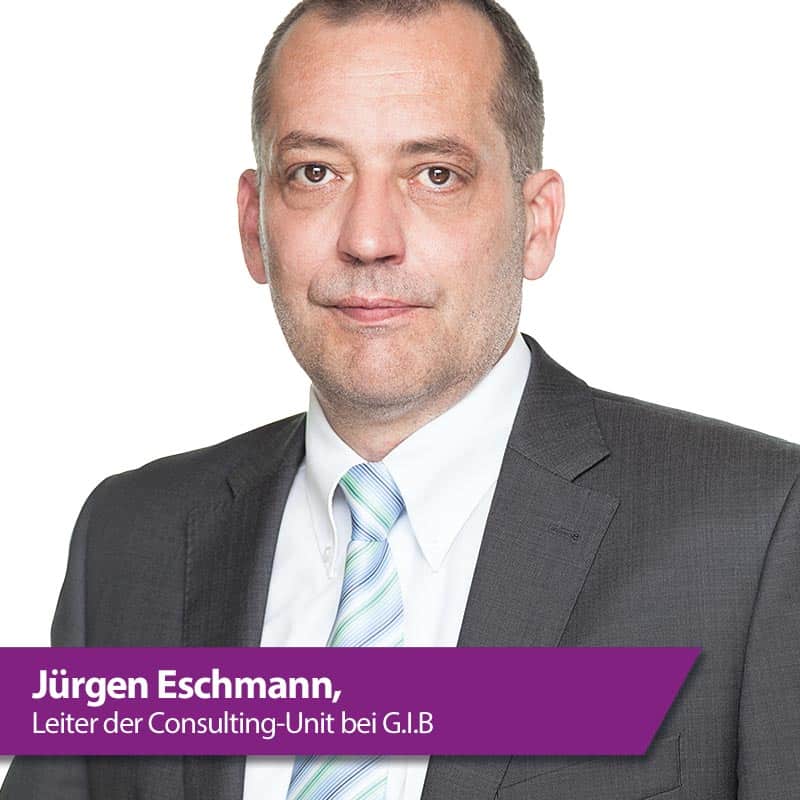The logistics optimizer


It all started with the SAP add-on G.I.B Dispo-Cockpit, and as the name suggests, its roots lie in scheduling, which was weak in the classic R/3 environment. The success proves SAP partner G.I.B right.
In an interview with E-3 Magazine, G.I.B Managing Director Michael Schuster explains:
"The G.I.B Dispo-Cockpit has grown rapidly over the years and now offers balance sheet functions and options that go far beyond scheduling and cover almost the entire logistics value chain.
Our scheduling software with ABC and XYZ analysis has become a high-end product for logistics optimization. Actually, we should rename our Dispo Cockpit to SCM Pilot, Process Optimizer or ROI Maker for Logistical Processes."
Supply Chain Management (SCM) and Material/Manufacturing Resource Planning (MRP) are the major challenges in the widespread use of SAP software in production companies.
The growing use of IT in production planning and control as well as logistics has given rise to the new fashionable term Industry 4.0. Experts are still debating the meaning and significance of Industry 4.0.
However, it is undisputed that organizational structures and processes in production and logistics can no longer do without far-reaching IT. SCM and MRP are dependent on the support of information technology.

G.I.B Dispo-Cockpit is an SAP-certified add-on that supports the entire planning process within the supply chain.
"To meet the different needs of our customers, we have divided the product into modular building blocks"
Schuster describes the development:
Variable sales planning and forecasting is the starting point, via far-reaching improvement of the MRP process and further processing of the MRP results, it continues to MRP controlling functionalities, via the possibility to map MRP strategies, up to decision trees with the goal of sustainable inventory optimization.
The subsequent processes in purchasing and production, around Kanban, VMI as well as scheduling, capacities, sequence planning are additionally supported.
"We have a clear vision in terms of market penetration of the Dispo Cockpit"
Michael Schuster emphasizes
"Within the next five years, we want to make every second customer who uses SAP ERP Logistics also a Dispo Cockpit customer."
And Jürgen Eschmann, Head of SCM Consulting at G.I.B, adds:
"The modules are fully integrated in their own namespace in SAP. For anyone who wants to create transparency in the SCM chain and who wants to work effectively and in a targeted manner, our G.I.B Dispo Cockpit is an absolute must.
Our cockpit not only offers inventory and process optimization, but also ensures satisfied customers. Because only a healthy supply chain management ensures a healthy customer relationship, with short and reliable delivery times through efficient processes, with fair prices through optimal inventories and with friendly employees through stress-free navigation. With our consulting unit, we offer our customers fast optimization of their processes using the G.I.B Dispo-Cockpit with minimal effort."
There is no doubt that the use of IT in production and logistics is on the rise, and the spectrum is broad: from machine-to-machine communication to electronic marketplaces that are integrated into the supply chain.
A few years ago, there was also the term Perfect Plant for this, which is perhaps now being replaced by Industry 4.0. The fact is, however, that IT has permeated everything from planning and production to transportation.
"We are also seeing this trend and, as a software company, we are naturally benefiting from it"
says Michael Schuster.
"The companies' attention to optimization in areas that were not so much in focus before is clearly noticeable. When I compare the know-how of the people to whom I told something about logistics optimization seven years ago with those sitting across from me in a presentation or training session today, I would put it this way: My preparation effort has not decreased."
The awakened interest in production and logistics in the IT scene has naturally also put SAP on the map. In addition to the internal further development of MII, MES and MRP, the acquisition of the Ariba trading platform can also be counted among them. What opportunities are there for SAP partners and what future will add-ins have in this area?
"There are two main aspects to consider here".
defines cobbler.

The first results from SAP's strategy of leaving a certain field to partners with add-on products in which they have special expertise. This is how initiatives such as Powered by SAP NetWeaver are to be understood.
"Since the partners provide a certain level of calm in the customer environment, there is no reason at all for SAP to change anything about that"
Schuster sees the state of affairs and specifies:
"The second aspect is that G.I.B is a typical niche provider compared to a globally thinking SAP. In addition, the partner solutions have reached a depth over the years that can't just be copied."
As a long-standing SAP partner, G.I.B is optimally integrated into the ecosystem. The add-on deployment takes place within the Business Suite on the SAP ERP system, the development at G.I.B is done completely in ABAP and ABAP Objects.
"We use techniques from SAP that we have developed further, such as ALV-Grid as well as AVL-Tree, and we rely very heavily on graphics functions."
It has been shown time and again that a high level of usability ensures enormous acceptance among users.
"Those who enjoy working with the software more will also improve in quality, make more confident decisions and avoid mistakes"
knows Schuster. In recent months, G.I.B has developed the first mobile approaches, working with HTML5 and UI5.
"Our software is industry-neutral and is individually adapted to the needs of the customer"
explains Schuster.
In customizing, the required degree of individualization is determined and defined in dialog with the customer. Here, too, the maxim applies:
"As much individualization as necessary, as little effort as possible. The surprisingly short payback time of our software speaks for itself here."
Nevertheless, every industry has certain peculiarities to solve, you definitely can't compare an automotive supplier that produces stamped parts with a manual labor-intensive company in the toy industry or a ketchup manufacturer - but the basic subject matter is still similar.
"Of course we have focus industries, you just have to look at our client list"
says Michael Schuster. You can find many automotive suppliers, mechanical engineering companies or metal/plastics processors there.
"Let's sum it up under the heading of discrete industry."
he describes the market situation and adds:
"On the other hand, there are a number of chemical and pharmaceutical companies, so more process industry. Further on kitchen builders, satchel manufacturers, toy manufacturers - all our customers have one thing in common:
You need the right materials at certain times in certain places, and you need them in the right quantity, of appropriate quality, in the right packaging."
Short interview
G.I.B Managing Director Michael Schuster and Jürgen Eschmann, G.I.B Head of SCM Consulting on the use of SAP Hana, Realtime Enterprise and the In-memory Computing Conference 2013 (www.in-memory.cc)
E-3: Do you also consider the latest SAP technology Hana in your product development?
Cobbler: Already in March 2012, we provided our first module DC-Controlling with a by-Side-Hana connection. This module is largely analysis-heavy and was therefore an ideal way to gain initial experience.
The performance gain was tremendous and as a result we made Hana a strategic issue within our company.
E-3: Can your dispo cockpit and Hana be a value-added combination?
Cobbler: We see great opportunities for our customers and prospects here! In planning and scheduling, we work with large amounts of data and in-memory technologies are perfectly suited here.
There are no more restrictions on complex hierarchies and thus higher accuracy of planning. The advantages for working capital are obvious.
Eschmann: With SAP Hana technology, we bring our customers into a new era: access to any volume of data in real time, any conceivable depth of detail, any desired scenario at the push of a button.
The whole thing additionally with mobile access. This means that the G.I.B Dispo-Cockpit can be used in any size of company and for any product range, no matter how extensive. Even decentralized turnover and sales planning in area sales is then no longer an issue.
Cross-country and cross-continent synergies can be realized to a completely different extent and costly redundancies can be eliminated. These are dreamlike prospects for our customers.
E-3: How do you evaluate the term Realtime Enterprise coined by SAP? How important is real-time for the G.I.B Dispo Cockpit?
Cobbler: After all, real-time enterprise essentially means providing users with all the information they need at the right time. This is precisely the approach we have been taking with our applications for several years.
So far, however, we have been subject to certain restrictions, just think of the MRP process in SAP ERP. We are currently watching with great interest what SAP is doing in this environment.
However, a key question at this point is how much real-time enterprise the user can actually handle. There are still large gaps between theory and practice here.
E-3: You are one of the sponsors of the In-memory Computing Conference 2013 in Frankfurt am Main. What is your expectation? What is the message to SAP's existing customers and conference participants?
Cobbler: From my point of view, the conference still has an educational character at this point in time; this is where we want to make our contribution, of course without neglecting our business.
The time of "enlightenment" will also continue within the next one to two years. When we presented our first Hana solution to a plenum of 250 people at the Success Days in May 2012, most of the participants could not do much with it because they had simply never heard of Hana and in-memory.
Of course, they marveled at the enormous time savings and asked interesting questions about business cases. Now we are a year further on and the following should be clear: An existing SAP customer who believes that he can get past the issue and that the world will continue to turn as before is quite obviously closing his eyes.






